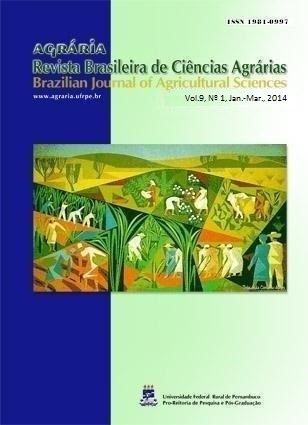Technology for seedlings production of Copaifera langsdorffii Desf. through seminal minicutting
DOI:
https://doi.org/10.5039/agraria.v9i1a3043Keywords:
‘copaiba’, vegetative propagation, growth regulator, substratesAbstract
The application of the technique of seminal minicutting in the vegetative propagation of native forest species is still recent in Brazil, requiring adjustments and development of methods for the production of seedlings. The aim of this study was to evaluate the feasibility of seminal minicutting propagation of ‘copaiba’ in different substrates and concentrations of butyric acid (IBA). The experiment was conducted in randomized complete block design with three replications each consisting of ten cuttings as experimental unit, in the factorial 3 x 5. The effect of three substrates (Bioplant®, 40% vermiculite + 30% rice hulls + 30% coconut fiber - 40V+30CAC+30FC, 70% vermiculite + 30% rice hulls - 70V+30CAC) and four doses of IBA (1.000; 2.000; 4.000 6.000 mg L-1), besides the control treatment (distilled water) was studied. The substrate 70V+30CAC is responsible for providing the highest percentage of rooting and nutrient content minicuttings ‘copaiba’. The application of IBA at a concentration of 6.000 mg L-1 provides more rooting of cuttings.
Downloads
Downloads
Published
How to Cite
Issue
Section
License

This work is licensed under a Creative Commons Attribution-NonCommercial 3.0 Unported License.


